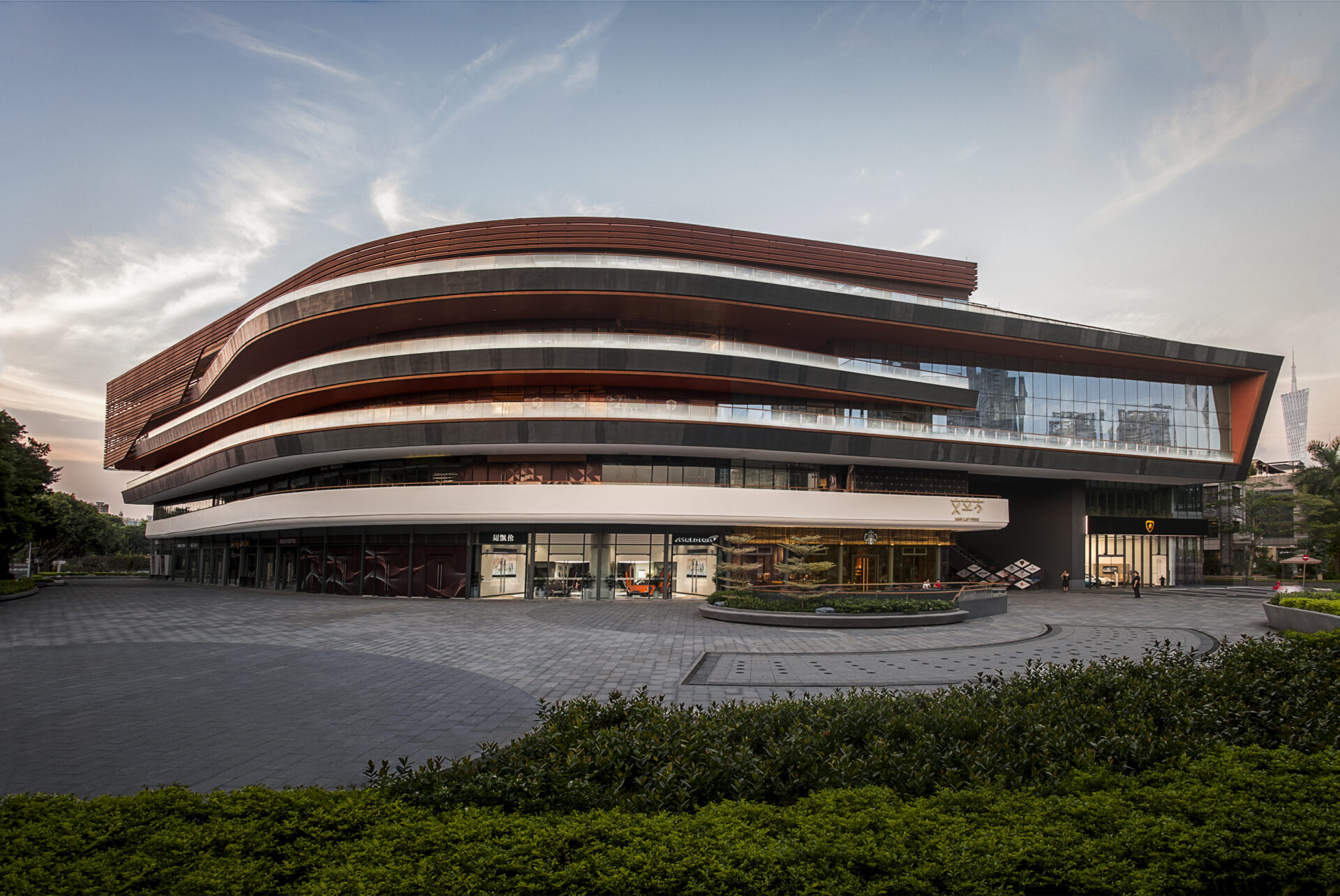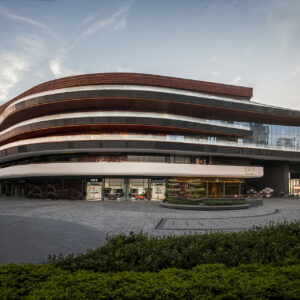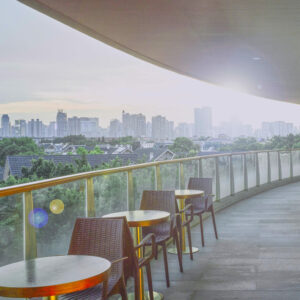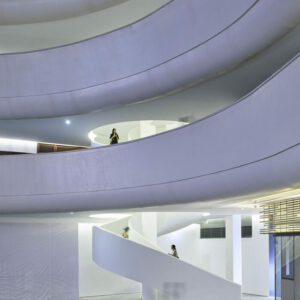Architect
Michelle Yip
Project Type
Public cultural building

ENVIRONMENT
The project takes advantage of the relatively low-temperature zone resulting from its location on the city’s green island facing the Pearl River. It draws in cool river wind through the overhead second floor in the southeast to make the public transport space more comfortable. Through analysis of the sunshine, the southwest veranda was enlarged to provide building shading. The reasonably designed width-height ratio of the inner courtyard leads to the self-shading of the building. The design value of the Solar Heat Gain Coefficient (SHGC) toward the south is 0. 33, and SHGC toward the west is 0. 26, which are both lower than the 0. 44 required by the Design Standard for Energy Efficiency of Public Buildings (GB50189-2015). The underground garage is equipped with an open-air garden to improve lighting and ventilation. The number of rooms in this project is 25, whose daylight area is 8152.86 m2 with a proportion of 82.51%, which is greater than 80% of the proportion value required in the Design Standard for Daylighting of Buildings GB50033-2013. After noise tests, the north facade was closed to form a multi-function hall; and the inner courtyard was enclosed to reduce sound interference from recreational activities to the north side of the school. Comfortability brings more outdoor activities and leads the activity space from indoors to the atrium.
COMFORT
Through the overall layout planning of the inner courtyard and outer square, the proportion of public space reaches 40%; and priority is given to the use of natural ventilation and cooling technologies to achieve north-south convection. The heat insulation performance of the outer envelope is calculated and meets relevant specifications. Suspended veranda shading and greening can reduce radiation and temperature of the facade, which is conducive to energy savings. The roof flower shelf is beneficial to heat insulation and energy conservation. In terms of equipment setting, energy-saving design is carried out for the air conditioning system, lighting system, and water supply and drainage system to reduce overall energy consumption. The annual total power consumption for heating and air conditioning is 24.91kwh/m2, which is lower than 26.65kwh/m2 of the annual total power consumption for heating and air conditioning of the reference building in Common Electrical Data of Buildings 19DX101-1 (National Building Standard Design Atlas). The high-efficiency water-cooled screw refrigeration unit was adopted, and the refrigeration coefficient of performance (cop) reaches 5.1. The total fixed load of indoor lighting is 66.38W/m2, and the power consumption index of general commercial buildings is 60 ~ 150W/m2. The annual power consumption of the building is 26.1kwh/m2/ year, and the building energy savings rate is 53.11%.
TECHNOLOGY
Through the rainwater collection system of the inner corridor, rainwater is used for greenery irrigation and garage washing after treatment. Frequency conversion and speed regulation water supply equipment and first-class water-saving appliances were adopted, and the terminal pressure is lower than 0.2Mpa. The project adopts high-efficiency water-saving urinals and toilets, which are in line with the requirements of the National Standards of Water-saving Sanitary Ware to save water. Organic ceramic plate, a recyclable building material, was adopted. Beam longitudinal reinforcement, column longitudinal reinforcement, foundation reinforcement, and slab reinforcement all use HRB400, accounting for more than 70% of the total force reinforcement; Exterior verandah shading reduces the material of single-function shading components, hence less environmental loads.



